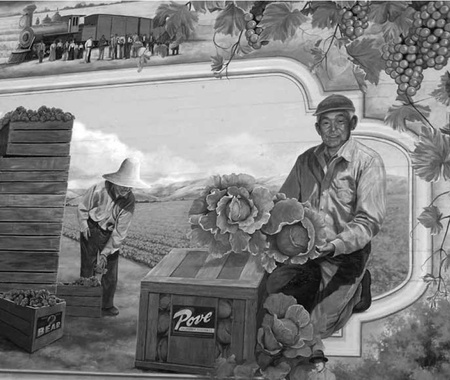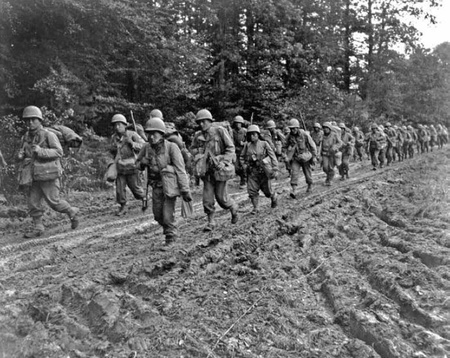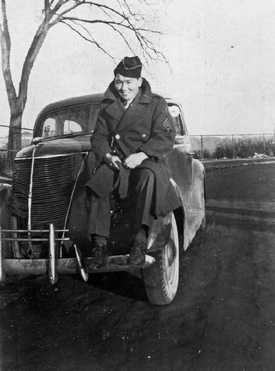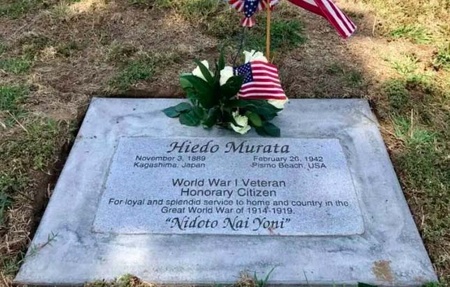I have never met a group of people, in my sixty-five years, as gracious and generous as Japanese-Americans. I never felt anything but welcome in their homes. Moms treated me like a son. One of their sons—Larry Hirase—was, during a hard time in my life when I needed one, like a brother to me. And, thanks to the Yamaguchi sisters, I had an overwhelming and immediate passion for sushi, long before it became fashionable. I identified this wonderful food with important Japanese holidays, like the Fourth of July and Labor Day.
We do not agree politically. Many in Arroyo Grande are Republicans. I’m an unreconstructed Truman Democrat, which, in my family, is a far stronger genetic marker than mere ethnicity.
But their ancestry, as proud as they were of it (and me, of my lesser identification, in my mother’s Irish ancestry) was always an afterthought. The fact that they were Japanese was about four tiers down in their hierarchy of importance. They were Americans, first of all.
And after that, they were Arroyo Grandeans, folks from San Luis Obispo County, California.

Here is how they got even with us after the war, after the “evacuation days,” when Kaz Ikeda had to sell his father’s trucks and tractors for pennies on the dollar (the Tsutsumi family sold $150,000 worth of commercial property in San Luis Obispo’s Japantown, on Lower Higuera, to a man named Evans for $2,000), after they’d been snatched away from San Luis Obispo County for three years of incarceration in Gila River, in the arid Arizona desert, where the temperature, in August 1942, when they first arrived, hovered at 109° for twenty days:
–They started Little League and Babe Ruth. And Youth Basketball.
–They built sports fields for kids at the high school and throughout the South County.
–Many were Buddhists, and, as such, they aided the poor, fed the homeless, sponsored the Boy Scouts. Others did the same as constant Methodists. Still others did the same and they were, thanks to St. Francis Xavier and the Jesuits, Roman Catholics.
–They served in Rotary, the Kiwanis Club, on the school board.
–They sponsored college scholarships.
–Their children were student body presidents, standout athletes, Homecoming Princesses.
–They taught hakujin (very gently translated as “white folks”) the Coal Miners’ Dance during Obon.
–Their mothers’ refrigerators—like Rose Hayashi’s, the mother of five sons—were open to three generations of ravenous teenaged boys.
–They remained constant friends to the same families who had been their friends before December 7, 1941. And they lived their lives out gracefully among those who had hated them.
I’ve done the research. There was not a conviction of a single Japanese-American in any serious case of espionage or sabotage after Pearl Harbor. Those folks who are convinced that our neighbors were communicating, via radio, with Japanese I-boats submerged offshore—or those in Hawaii, who allegedly carved arrows in Waimea Valley cane-fields pointing to the anchorage at Pearl Harbor—are simply ignorant liars repeating a third generation of ignorant lies.
I was able to find only one example of modest disloyalty among California Japanese (a term that needs to be used carefully: Issei, first-generation Japanese immigrants, under an often-reaffirmed Supreme Court ruling, were not allowed to become American citizens because they were not Caucasians): a farmer, enraged at the evacuation, plowed under his strawberry crop because he could not bring it in before the buses arrived to take him and his family away. A court found him guilty of sabotage.
No court found San Luis Obispo County World War I veteran Hideo Murata guilty of disloyalty, even though he sabotaged the evacuation order by renting a hotel room so that he could take his own life in a place that was not home. He is home now, buried in Arroyo Grande, and his marker on a previously unmarked grave came only because of the efforts of local people, like my friends David Middlecamp and Deborah Love, who choose to remember history even when it’s painful to do so.
Ironically, ten Caucasians would be convicted of espionage or sabotage on behalf of the Imperial Japanese Government during World War II, and so went to prison.
Meanwhile, 1400 Japanese and Japanese-Americans in San Luis Obispo County and northern Santa Barbara County went to prison in the desert for the accident of their ancestry. Dozens responded by volunteering to fight America’s enemies. Two of them won Bronze Stars for valor. One of those Bronze Stars, for an Arroyo Grande soldier named Sadami Fujita, was posthumous, because he died in the Vosges Mountains of France, a combat veteran cut down by German small-arms fire while he was bringing up more ammunition during an attempt to rescue a battalion of terrified Texas soldiers–nineteen-year-old draftees—who’d been surrounded by the Germans.

Nearly one thousand Nisei GI’s in the 442nd Regimental Combat Team were killed or wounded in the effort—ultimately successful—to break through to 230 Texans in the “Lost Battalion.”
As a result, every Nisei soldier who served in the 4-4-2 is, and will always be, an honorary Texan.
442nd veteran Haruo Hayashi never understood the citizenship denied the black GIs he met in 1945 at Camp Shelby, Mississippi, the 4-4-2’s training camp, who stood outside the camp’s theater while white GI’s—and their Nisei counterparts, deemed “white” by Jim Crow standards—enjoyed USO shows inside. Haruo had been raised in a family so attuned to honor that the injustice visited upon the Hayashis ironically escaped him in the face of Mississippi racism, in the dishonor he saw heaped on black soldiers who had done nothing to deserve it.

The year before–1944–Army Intelligence officer George Nakamura had won his Bronze Star for rescuing a downed American flier behind enemy lines in China. He later won the Presidential Medal of Freedom for his contributions, as a businessman, for healing relations between America and Japan in the postwar years.
Nakamura never returned to live in Arroyo Grande after April 28, 1942, the day four Greyhound buses left the Crown Hill high school campus to take his family and their neighbors to their sleeping quarters that night, and for the four months that followed, until their transfer to a new trial in the Arizona desert. They slept in stalls at the Tulare County Fairgrounds that still stank of the animals that had fouled them.
Seventy years after he’d been taken away, George Nakamura died in Texas. He asked his son, Gary, to bring his ashes here so he could be at home again, and forever, in Arroyo Grande.
On the morning of the day he’d left with his family on their assigned bus, a line of teen-aged girls—Nisei and hakujin—had ascended Crown Hill toward the high school, their hands clasped, all of them in tears, in their last moments as classmates and as friends.
Like George Nakamura, most of the Nisei girls, and their families, would never come back. They would live out their lives in other states far away, but they would live them out as Americans.
In all this sad, ironic moment in history, in all the books I’ve read, in all the research I’ve done, and in all the lessons I’ve taught, I have never found better examples of what used to be called “Americanism” than those offered by the Japanese-American families I grew up with and by those I would never have the chance to know. They had been taken away from me before I was born.

(I understand now that they were as thoroughly “American” as are the new immigrants for whom I feared–the Muslim children I’ve had the chance to teach and the Muslim families I’ve grown to admire and love– in this new century, in the last few years of my time as a high school history teacher. They are a gift we would do well to accept and embrace.)
I think this ugly time–the spring of 1942–paradoxically demonstrates why history is so useful. America was built, among other things, on the strength and flexibility of steel, and our national character is no less an alloy, forged in the lives of ancestral ghosts, in lives seared by shame and hardened by honor. Some of our ghosts came from Japan.
* This article was originally published on the author’s blog on December 9, 2017.
© 2019 Jim Gregory





